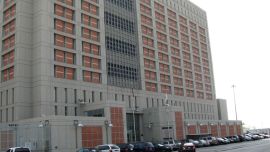Argentina's ongoing recession and accompanying fall in purchasing power made its presence felt during the 2024 winter break with the number and expenditure of tourists who travelled during those two weeks down considerably on last year.
According to a report by the CAME Argentine Confederation of Medium-Sized Enterprises, 4.9 million tourists travelled, which meant an 11.9-percent drop from last year. The expenditure totalled 1.2 trillion pesos in the cities in the national travelling circuit, 22.2 percent less than in 2023 at constant prices.
The CAME’s number based on information provided by entities from provincial and local government “reflect a month with low consumption in activities, and with a public faithful to the snow which has shortened their stay, but still went to ski resorts”.
The average stay went down from 4.5 days in 2023 to 4.1 this year and daily expenditure was on average 59,890 pesos, which in real prices (that is, deducting inflation) was 3 percent lower than last season.
According to the entity, in this winter break “cultural gatherings went down, especially musical ones, which were more discrete, including popular festivities had fewer bands with mass attendance. On the other hand, there were plenty of sporting competitions”.
In the analysis, due to cold temperatures, beachfront areas had a lower turnout than previous years and tourists leaned more towards destinations with hot springs, mountains, snow and countryside.
“In addition, there were no incentives like in previous years with the Previaje programme. Many cities compared this winter with results obtained during pre-pandemic years, between 2017 and 2019” when Mauricio Macri was president, the report held.
Buenos Aires Province
Some 377,000 tourists visited Mar del Plata, according to the city’s Municipal Entity of Tourism and Culture, with an average hotel occupancy of 55 percent, below last year. Within the province, a drop was felt, but not as high as last year, albeit with shorter stays. Tandil, Sierra de la Ventana, Tigre, Baradero, Carmen de Patagones, San Miguel del Monte, Lobos, San Pedro, San Antonio de Areco and Chascomús all had fewer tourists, attracted by nature, historical heritage, festivities and gatherings.
Buenos Aires City
The number of visitors fell between 10 and 15 percent compared to last year. “The crisis and less competitive exchange rate for international tourists limited arrivals, but that did not prevent good numbers to show”. The occupancy of 3, 4 and 5-star hotels averaged 61 percent the first week and 72 percent the second week.
Córdoba
During the first two weeks alone 550,000 tourists arrived at the province. Hotel occupancy reached nearly 70 percent in the capital and Villa Carlos Paz, and even higher levels in other destinations: Colonia Caroya (90 percent), Río Ceballos (78 percent), La Falda (98 percent), Villa General Belgrano (90 percent), Santa Rosa de Calamuchita (80 percent), La Cumbrecita (85 percent) and Alta Gracia (90 percent).
Entre Ríos
“The province ended the winter break with a poor balance compared to other winters”. In Gualeguaychú, hotels, cabins and other accommodation had an average occupany below 60 percent, far from the 74 percent of last year, with a lower presence of Uruguayans having an impact.
Jujuy
With occupancy levels averaging 85 percent, this province was one of the top picks during this break, with an increase in income from last year, albeit below that of 2022.
La Rioja
The local Tourism secretariat pushed the “Movete por La Rioja (Move around La Rioja” programme, with a similar offer to the Previaje, left a moderate balance.
The weeks with the higher turnout were the second and third of the month with 70-percent hotel occupancy. The most popular place was Villa Unión, with an 80-percent occupancy and favoured by its closeness to the Talampaya National Park.
Mendoza
From July 8 to 28 325,000 tourists travelled to Mendoza who, according to the provincial Tourism Observatory, spent over 63,609 pesos per day. Hotel occupancy ranged from 70 to 88 percent, reaching its peak in the second week of July.
Neuquén
Even though snowy destinations experienced a 12-percent drop in arrivals, the balance given the context was moderate and good. San Martín de los Andes, Villa La Angostura and Caviahue were the top three, with an 80-percent occupancy a daily expenditure of 80,000 pesos per tourist.
Salta
The winter season closed with an average 75-percent occupancy rate in the province and peaks of 80 percent depending on the city. Tourists stayed for 3 days and spent on average 70,000 pesos per day.
Río Negro
Bariloche, one of the most sought-after destinations in the winter break, closed the month with a 70-percent occupancy rate, below last year’s 95 percent. Other popular destinations in the province were El Bolsón, which with its 60-percent occupancy led with Bariloche vistor’s chosen destinations, together with Las Grutas (55 percent), Playas Doradas (35 percent) and the valleys area with 50 percent.
– TIMES/PERFIL


















Comments